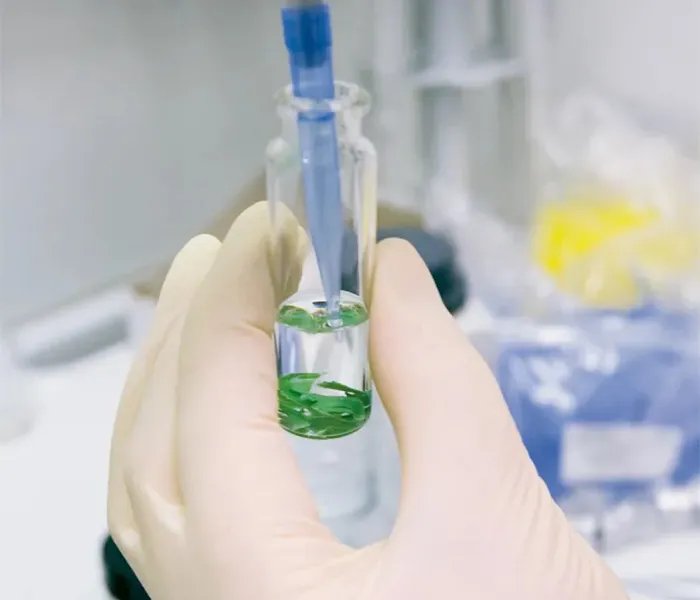Силиконовое масло с низким содержанием водорода набирает популярность в косметической промышленности благодаря своим уникальным свойствам и универсальному применению. Как легкое, нежирное смягчающее средство, оно помогает улучшить текстуру и эффективность косметических формул. В этой статье мы рассмотрим преимущества силиконового масла с низким содержанием водорода, его применение в косметике и лучшие практики его использования.
Что такое силиконовое масло с низким содержанием водорода?
Силиконовое масло с низким содержанием водорода. это тип силикона с более низкой степенью замещения водорода, что делает его идеальным для косметических формул. В отличие от традиционных масел, он имеет уникальную структуру, которая обеспечивает шелковистое ощущение и улучшает растекаемость продуктов. Его гидрофобная природа позволяет ему отталкивать воду, сохраняя при этом дышащий барьер на коже, что делает его отличным выбором для различных косметических применений.
Преимущества силиконового масла с низким содержанием водорода в косметике
- Улучшенная текстура и ощущение
Одним из основных преимуществ низководородного силиконового масла является его способность улучшать текстуру косметических продуктов. Оно придает гладкость и шелковистость, облегчая нанесение составов. Это качество особенно ценно в таких продуктах, как основы, праймеры и увлажняющие средства, где роскошная текстура может значительно улучшить пользовательский опыт.
- Нежирное увлажнение
Силиконовое масло с низким содержанием водорода обеспечивает увлажнение, не оставляя жирных следов. Эта характеристика имеет решающее значение для потребителей, ищущих легкие варианты ухода за кожей. При использовании в лосьонах и кремах оно помогает удерживать влагу, позволяя коже дышать, что делает его подходящим для жирной или комбинированной кожи.
- Улучшенная растекаемость
Включение в формулы силиконового масла с низким содержанием водорода улучшает растекаемость продуктов. Это означает, что потребители могут использовать меньше продукта, обеспечивая при этом равномерное покрытие. Это особенно полезно в косметических продуктах, таких как жидкие основы и BB-кремы, где равномерное нанесение имеет важное значение.
- Водостойкость
Силиконовое масло с низким содержанием водорода может повысить водостойкость косметических формул. Это качество особенно полезно в солнцезащитных кремах и стойкой косметике, гарантируя, что продукты сохранят эффективность даже во влажных или мокрых условиях.
- Совместимость с другими ингредиентами
Это силиконовое масло хорошо совместимо с рядом других косметических ингредиентов. Оно может легко смешиваться с маслами, восками и эмульгаторами, позволяя разработчикам создавать стабильные и эффективные продукты. Его совместимость означает, что его можно использовать в различных формулах, от кремов и лосьонов до сывороток и средств для макияжа.
Применение в косметике
Силиконовое масло с низким содержанием водорода может использоваться в различных косметических продуктах, в том числе:
- Тональные основы и праймеры
В основах и праймерах низководородное силиконовое масло помогает создать гладкую основу для нанесения макияжа. Оно улучшает растекаемость и финиш этих продуктов, что приводит к более безупречному виду.
- Увлажнители и сыворотки
В формулах для ухода за кожей он обеспечивает легкое увлажнение, что делает его пригодным для ежедневных увлажняющих средств и сывороток. Его способность образовывать воздухопроницаемый барьер на коже помогает предотвратить потерю влаги без ощущения тяжести.
- Солнцезащитные средства
В солнцезащитных формулах низководородное силиконовое масло повышает водостойкость, что делает его отличным выбором для продуктов, предназначенных для использования на открытом воздухе. Его легкое ощущение гарантирует, что пользователи не будут ощущать жирного остатка.
- Средства по уходу за волосами
В формулах для ухода за волосами это силиконовое масло помогает улучшить управляемость и блеск, не утяжеляя волосы. Его можно найти в кондиционерах, сыворотках и средствах для укладки, обеспечивая гладкость и защиту.
Лучшие практики использования силиконового масла с низким содержанием водорода
- Определите правильную концентрацию
Когда формула с использованием силиконового масла с низким содержанием водорода, важно определить правильную концентрацию для вашего продукта. Начните с более низкого процента (1-5%) и корректируйте в зависимости от желаемой текстуры и производительности. Более высокие концентрации могут обеспечить более значительный эффект, но также могут привести к чрезмерно тяжелому ощущению силикона.
- Включайте постепенно
Вводите низководородное силиконовое масло постепенно в ваши рецептуры. Смешивайте его с другими маслами или эмульгаторами, чтобы обеспечить равномерное распределение. Если вы готовите эмульсию, добавьте его в масляную фазу перед смешиванием с водной фазой.
- Проведение испытаний на стабильность
Всегда проводите тестирование стабильности после включения в ваши рецептуры силиконового масла с низким содержанием водорода. Это тестирование поможет гарантировать, что ваш продукт сохранит свою предполагаемую текстуру, эффективность и срок годности с течением времени.
- Маркировка и правила
Обеспечьте соблюдение косметических норм в вашем регионе при использовании низководородного силиконового масла. Четко обозначьте его наличие в списке ингредиентов и придерживайтесь рекомендаций относительно пределов концентрации.
- Просвещать потребителей
Просвещайте потребителей о преимуществах продуктов, содержащих низководородное силиконовое масло. Подчеркните его легкие, нежирные свойства и то, как оно улучшает общий пользовательский опыт.
Заключение
Силиконовое масло с низким содержанием водорода. является универсальным ингредиентом, который может значительно улучшить эффективность косметических формул. Его способность обеспечивать роскошное ощущение, легкое увлажнение и улучшенную растекаемость делает его ценным дополнением к различным продуктам, от тональных основ до солнцезащитных кремов. Понимая, как правильно использовать низководородное силиконовое масло, разработчики могут создавать эффективную и привлекательную косметику, которая соответствует запросам потребителей.
Поскольку косметическая промышленность продолжает развиваться, включение инновационных ингредиентов, таких как низководородное силиконовое масло, станет ключом к разработке продуктов, которые выделятся на конкурентном рынке. Воспользуйтесь преимуществами этого уникального силиконового масла и поднимите свои косметические формулы на новые высоты.





